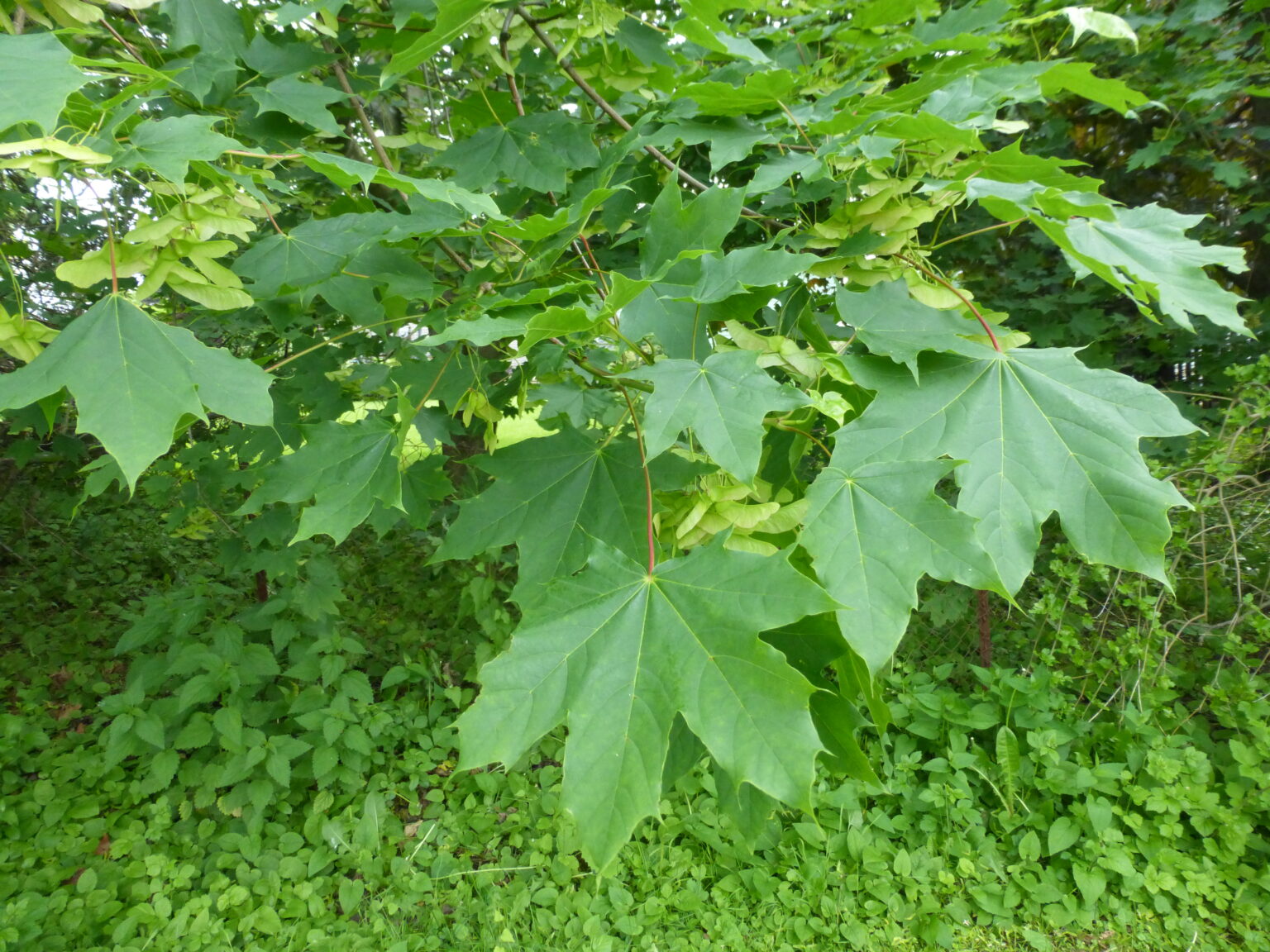

Honeybees and bumblebees have been observed to suck nectar from theįlowers (Wilhelm & Rericha, 2017). The flowers of Norway Maple are cross-pollinated primarily by bees This tree is often cultivated in such places as areas along streets, Even though it may have the potential to be invasive, Habitats consist of areas along roads and vacant lots It was introduced into North America from Eurasia as a Norway Maple has occasionally naturalized in NE Illinois and probably a Phytotoxic chemicals that inhibit the growth and development of other Shade, grass and other kinds of ground vegetation have difficulty
Norway maple full#
Norway Maple prefers full sun to light shade, more or less mesicĬonditions, and a fertile loam or clay-loam soil. Turn brown they are distributed by the wind. The samaras become mature during the fall and Each pair of samaras danglesįrom a slender pedicel. The samaras are joined together at the base, forming anĪngle that is a little less than 180°. Replaced by pairs of samaras (seeds with elongated wings) that areġ½-2" long. Theīlooming period occurs during mid-spring shortly before, or at the same Stamens, while female flowers have a green pistil with a pair of stylesĪnd 8 sterile stamens. (a little less thanġ/3") across each flower has 5 sepals, 5 petals, and a circularĬentral disk that are greenish yellow. Individual male and female flowers span about 8 mm.

The slender stalks ofĮach corymb are green and either hairless or glandular-hairy. Types of flowers are produced in umbel-like clusters spanning 2-3"Īcross each cluster consists of 10-30 flowers. The slender petiolesĪre light green to pale yellow, terete, and glabrous they are as longĪs, or slightly longer than, the adjoining leaf blades.īe monoecious or dioecious, producing male (staminate) flowers andįemale (pistillate) flowers on either the same or separate trees. Slightly more pale both surfaces are hairless. Upper leaf surface is medium to dark green, while the lower surface is Is rather broad at the base, tapering gradually to a pointed tip thereĪre usually 1-2 large pointed teeth on either side of each lobe. Individual leaves are 3-6" longĪnd 3½-7" wide they are palmately lobed (usually 5 lobes). Greenish brown to brown with scattered white lenticels. Branch bark is more smooth and gray, while twigs are Ridges that are separated by narrow brown furrows sometimes the ridgesĪre interlacing. The trunk bark of mature trees consists of gray
Norway maple how to#
Norway Maple Field Identification – Credit: Lower Hudson PRISMĪdditional information on how to identify Norway maple be found online.Tree is 40-80' tall, forming a single trunk up to 2½' across and a However, Norway maple can easily be distinguished from these other tree types because its leaves and twigs ooze milky white sap when cut or torn. Norway maple may be confused with other types of maple trees such as: Look for this tree in residential and commercial settings In natural spaces, Norway maple can be found growing in forests adjacent to suburban areas. The bark of this tree is gray or brown and fairly smooth. In the fall, Norway maple leaves turn a pale yellow color.
/https://www.thestar.com/content/dam/thestar/news/gta/trees/2019/04/13/old-majestic-norway-maple-near-torontos-don-river-has-a-dark-side/norway_maple_fall.jpg)
Leaves are dark green in color with smooth edges, each with 5-7 lobes. Its crown shape is rounded and the canopy can be very dense. Norway maple is a large deciduous tree that can grow to heights of 40-65 feet.


 0 kommentar(er)
0 kommentar(er)
